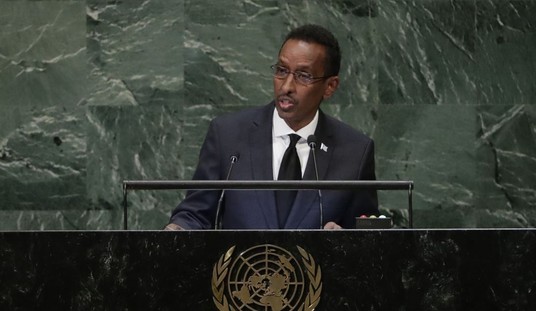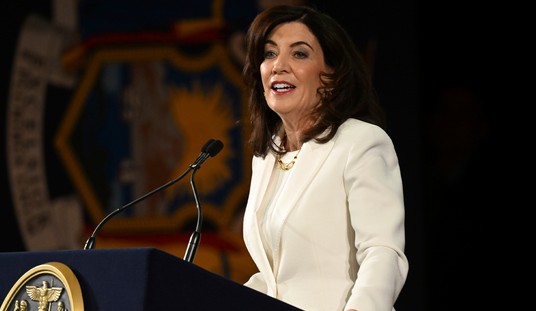This week the Senate Foreign Relations Committee will begin addressing the proposed International Violence Against Women Act (I-VAWA) — S. 2982 and H.R. 4594. With a price tag of over $1 billion over the next five years, the bill will add to the hodge-podge collection of “progressive” initiatives that are pushing the U.S. to the brink of financial crisis. Feminist groups are pushing action on the legislation before the November elections — for obvious reasons. Like so many feminist proposals, the rhetoric sounds great. Is there anybody, other than the jihadists, who is not opposed to violence against women? The problems with I-VAWA are hidden in the fine print under the lofty rhetoric; the agenda is predictable: anything promoting so-called “women’s rights” is a thinly-veiled push for anti-family policies, gender quotas, and, of course, abortion-on-demand, all on a global scale.
The issue of violence against women has a sketchy past, where facts are obscured by emotional accounts of battering and other violence. Any normal person is appalled anytime a stronger person takes advantage of or abuses a more vulnerable person. Decent people are outraged at real abuse, but false accusations and trumped up campaigns to promote hidden agendas are equally outrageous. By now, everybody knows that the old 1993 story about violent attacks on women increasing on Super Bowl Sunday was false; the “study” was debunked just days after it first appeared. Even so, periodically the “fact” still gets reported as truth. By now, everybody should also know that the majority of “domestic violence” incidences are committed by the boyfriends of mothers, not husbands and biological fathers. Sadly, however, statistics are now kept on “intimate partner” violence, and we refer to “domestic abuse” rather than breaking the violence into types of intimate partners (whether a husband, former husband, or boyfriend) or domestic household arrangement (whether marriage or cohabitation).
The facts are clear: the breakdown of marriage and family has been a major factor in increasing violence and abuse against women and children. The sad reality is that we are spinning our wheels as a nation in trying to keep up with the problems of women who are not protected by their husbands and of children who are denied the presence and protection of mature, concerned fathers. How many more women and children will be abused before we acknowledge that the investment America needs to make for the nation’s women and children is to encourage and support marriage? A married father-mother home is the safest and most nurturing place for the nation’s women and children.
Recommended
Further, the urban myths continue alongside the long-standing practice of feminists equating a lack of “reproductive services” with “domestic violence.” The I-VAWA (Section 3) acknowledges U.N. Security Council Resolution 1325 — which, as those who are knowledgeable about the U.N. recognize, is the section that is cited as mandating the protection of reproductive rights. The I-VAWA would allocate $10 million a year to the United Nations Development Fund for Women, UNIFEM (Section 201), one of the major U.N. agencies devoted to promoting the Millennium Development Goals (MDGs), which prominently feature reproductive and gender rights. First, note that the UNIFEM definition of domestic violence includes “psychological violence perpetrated or condoned by the government of the country in which the victim is a resident” (Section 4). Second, what the American public needs to be aware of is that the U.N.’s interpretation of “psychological violence” includes “mental distress” brought on by lack of access to abortion services.
Plus, the money trail is a maze of symbiotic relationships. For instance, the I-VAWA bill (Section 112) includes provisions for grants to Women’s Nongovernmental Organizations and Community-Based Organizations. The organization that has taken the lead in promoting I-VAWA is the Family Violence Prevention Fund (FVPF), “which stands to receive a major portion of I-VAWA funds.” The FVPF promotes “training and sensitization” programs for judges and judicial officials that will solidify “access to reproductive services.”
Other concerns regarding I-VAWA are equally troubling. The broad definitions of “violence” and the use of terms like “psychological harm” and “coercion” leave plenty of room for false accusations of abuse that will break up families and increase welfare dependence. The bill establishes an “Ambassador-at-Large for Global Women’s Issues” — what some have called a “feminist czar” — (Section 101) that would establish powers under one person’s control that would supersede current and established policy-making and financial procedures.
Ironically and unbelievably, the I-VAWA does not address sex-selective abortion, which is one of today’s most egregious policies perpetuating violence against women. Both China and India are facing shortages of marriageable-age women as a result of decades of this practice, a demographic fact that has sociologists and politicians concerned about the future of those nations.
The I-VAWA is promoted as a “groundbreaking bill” that will “apply the force of U.S. diplomacy and foreign assistance to preventing gender-based violence.” That loose term — gender-based violence — can mean anything and generally covers a wide range of ideological goals from the “women’s rights” agenda. In the U.S., the bill will seek to “change public attitudes” and “social norms,” efforts that are potentially “biased in their content and ideological in their purpose.”
Though these vague, nebulous goals are dressed up to sound wonderful and disguise the intent of the ideologues who promote them, their meaning can be as misleading — and disastrous — as the campaign slogan of “hope” and “change.”
Lead Sponsors of I-VAWA:
Senate: John Kerry (D-Massachusetts), Barbara Boxer (D-California), Olympia Snowe (R-Maine), and Susan Collins (R-Maine)
House: Bill Delahunt (D-Massachusetts), Ted Poe (R-Texas), and Jan Schakowsky (D-Illinois)

























Join the conversation as a VIP Member